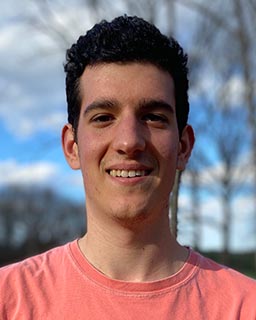Graduate student earns NSF Research Fellowship to innovate metal casting
Mechanical engineering's Philip King to explore new ways for foundries to mass-produce stronger, less defective parts
4/22/2020
By Erin Cassidy Hendrick
UNIVERSITY PARK, Pa. — Philip King, a doctoral student in the Penn State Department of Mechanical Engineering, has been awarded a National Science Foundation (NSF) Graduate Research Fellowship (GRFP).
The fellowship program will support King’s work in metal casting, which the NSF deemed has “potential for significant research achievements,” according to their website.
Born in Pittsburgh, King attended Rice University for his undergraduate degree. Before arriving at Penn State, he also held several internships with companies such as U.S. Steel. These experiences encouraged him to continue exploring his interest in manufacturing and eventually led to his exploration of metal casting for his graduate research.
Metal casting, the process where molten metal is poured into sand molds and cools down into the shape of mechanical components, is a traditional and widely used manufacturing process. Foundries across the United States are actively manufacturing parts using casting for countless applications, including construction, automotive and defense applications.
“Foundries have a large economic impact, but they don’t get much research attention,” King said. “In my opinion, people are overlooking this important industry.”
The science behind metal casting has remained largely stagnant for the last several decades according to King’s adviser, Guha Manogharan, assistant professor of mechanical engineering.
“We have so much new technology at our disposal, so I think we need to help innovate this industry,” King said.
Equipped with this new NSF fellowship, he plans to do just that. In the Systems for Hybrid-Additive Process Engineering (SHAPE) Lab, King is one of many researchers that are directing their energies to innovating metal casting for the 21st century.
Building upon previous research conducted in the SHAPE Lab, King is examining the integration of a conical-helix shaped sprue in the casting process. This DNA-like shape replaces a straight funnel through which the molten metal is poured into the mold. This novel design allows for more control over the molten metal, resulting in stronger, less defective parts and was first explored by Santosh Reddy Sama, one of Manogharan’s previous graduate students.
Another student, Daniel Martínez Lepp, researched additively manufacturing, or 3D printing, this shape into the sprue.
King is taking it a step further. He proposes new ways to understand the design process for 3D geometries within the mold and how it could improve casting properties. Specifically, it will be used in the runner which connects to the bottom of the sprue and is the last stop for the molten metal before it fills the mold. Traditionally, only straight-line runners are used.
“This is important because bringing this shape into the runner allows for these molds to be manufactured using traditional methods,” King said.
While additive manufacturing allows for more complex and innovative designs for the molds, demonstrated by Lepp’s work, there are some challenges to address before these molds can become mass produced. Most traditional molds made in foundries are split in half horizontally. The placement of the sprue means a complex shape like the conical helix cannot be retrieved easily.
The runner, which sits firmly at the bottom of the mold, presents a way to co-opt the benefits of the shape, while allowing for the part to be traditionally manufactured.
“If you can mass produce better quality components, that has a really broad reach,” King said.
Although he is working remotely due to the COVID-19 pandemic that prompted the pivot to online learning at Penn State, he is continuing on with this work.
“I do a lot of metal fluid flow simulations, which I’m still able to do from home,” he said. “So, I’m still on course with this project.”
Looking ahead, with this fellowship, King hopes his work can influence and innovate casting methods across the nation.
“It would be really cool and satisfying if I can do something that foundries are able to adopt widely,” he said. “It could make a real difference for the industry.”




